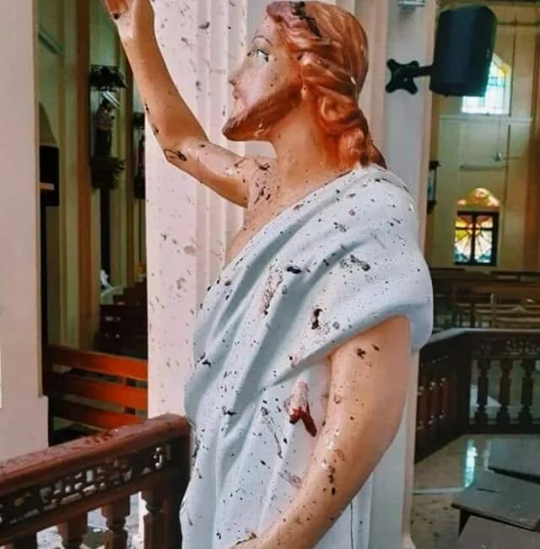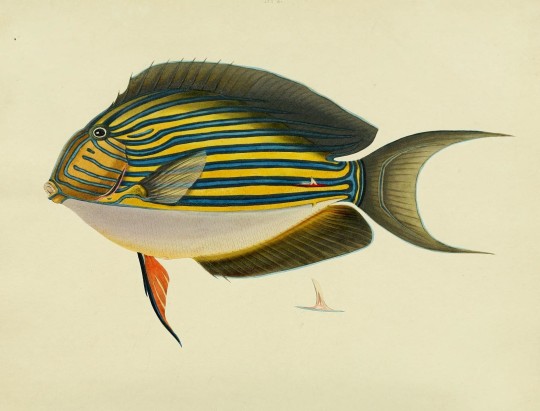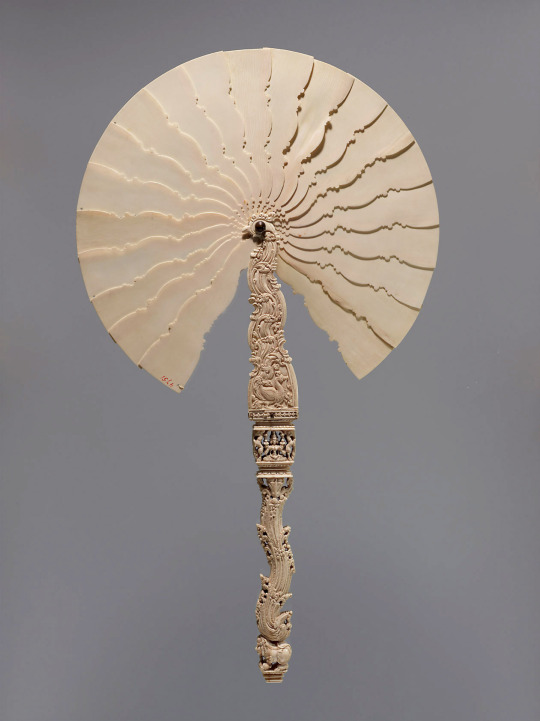#sri lanka history
Explore tagged Tumblr posts
Text
This article hits a lot of my discomfort around comparing the LTTE to Hamas, or any of the Palestinian resistance.
Do I believe in Tamil self-determination? Yes. Should they have a sovereign state? Yes. Should they have won the North instead of the SL military? Absolutely. Does any indigenous Tamil or Muslim person in the North and East have the right to armed resistance against majoritarian rule? Also yes. Was the LTTE rank and file fighters resisting annihilation and the SL military to a man was committing murder? Yes.
Do I believe the LTTE as an organisation and Prabhakaran as its head actually stood for anything but replacing the Sinhalese ethnostate with a Tamil one of their own choosing? Fucking no.
Navaratnam, after splitting away from the Federal Party, also published a newspaper, Viduthalai. I read the paper in the 1970s, when it often compared Tamils and Jews in terms of cultural character—including a supposed predisposition for intelligence and entrepreneurship—and argued that they were similar. (This line of thinking survives to this day: I know of Tamil nationalists in the diaspora who invoke the establishment of Israel as an example for their own goals, and see similarities in the Tamil and Jewish struggles.) Viduthalai also serialised Exodus, a popular 1958 novel by the American Jewish writer Leon Uris, which was translated by Navaratnam and published in Tamil as Namakkoru Naadu—A Country of Our Own.
Exodus presents a factually inaccurate but heroic account of the Zionist project to establish Israel as a Jewish nation state, and follows a group of Jewish arrivals in Palestine after the Second World War. It makes no mention of the mass dispossession and ethnic cleansing of Palestinians by Zionist forces in 1948. Edward Said, the Palestinian activist and intellectual, has highlighted how the novel dehumanises Arabs. Said has also argued that, when it comes to Israel, “the main narrative model that dominates American thinking still seems to be Leon Uris’ 1958 novel Exodus.” The British journalist Robert Fisk once described the novel as a “racist fictional account of the birth of Israel” in which Arabs are “rarely mentioned without the adjectives ‘dirty’ and ‘stinking’.”
Velupillai Prabhakaran, who established the LTTE in 1976, was a supporter of the Self-Rule Party as a young man. He would also have been a Viduthalai reader, and was inspired by Exodus. I was informed by a former LTTE member that the organisation also separately translated Exodus in full in the mid-1980s, and that it was widely distributed among LTTE cadres and supporters. Two prominent members of the organisation told me separately that the film adaptation of Exodus was also screened to LTTE cadres at camps in both Sri Lanka and the southern Indian state of Tamil Nadu.
Following long-term disillusionment with the LTTE, and seeing no democratic space to raise my concerns with the organisation’s autocratic leader, Prabhakaran, I quit the LTTE for good in April 1984. Many others also left, both before and after me, with the same concerns – among them the one-man leadership and complete intolerance for political discussion or difference. Some of them were murdered by the LTTE for leaving. One tragic example is Patkunam, one of the group’s founding members, who was murdered by Prabhakaran sometime in or around 1977 with the agreement of the appointed central committee of the LTTE. Prabhakaran suspected that Patkunam had been influenced by EROS’s leftist ideas and wanted to leave the LTTE. The LTTE had a policy that those who wanted to leave and join another group or establish another organisation would face capital punishment.
...
As it increasingly gained control of the North and East of Sri Lanka, the LTTE arbitrarily declared itself the “sole representative” of the Sri Lankan Tamil people. On this basis, it targeted Tamil activists from leftist and progressive organisations, killing or otherwise silencing them. The leadership of the TULF, the Tamil parliamentary party, was also wiped out. From as far back as the mid 1980s, the LTTE also suppressed other Tamil militant organisations such as TELO, PLOTE and the EPRLF. Eventually this meant targeted killings and massacres of both cadres and leaders from rival groups. Sections of EROS were forcibly absorbed into LTTE ranks. The LTTE also killed numerous EPRLF and PLOTE cadres who had received training from the PFLP in Syria.
...
In 1990, the LTTE executed a plan to ethnically cleanse Muslims from territories under its control in the North of Sri Lanka. The entire Muslim population of the Jaffna, Vavuniya, Mullaitivu, Mannar and Kilinochchi districts, numbering approximately 75,000 people, was evicted at gunpoint. This demonstrated the LTTE’s desire to establish an ethnically exclusive Tamil state, much like the Jewish state of Israel envisioned by the Zionists. The LTTE’s entire ideology was based on exclusive Tamil nationalism; its idea of a homeland and a nation meant treating Muslims and other minority communities in Tamil-dominated areas as second-class citizens at best. In this, it had uncomfortable similarities with the Zionist outlook on Palestinians and Muslims.
...
The LTTE was a right-wing organisation, with a statist approach to popular struggles. Prabhakaran made it clear that the LTTE would not interfere with “domestic issues” in other countries. I know this because, while I was with the organisation, he did not want to have any links with Marxist-Leninist parties in India as he did not want to antagonise the Indian state. The LTTE’s international network consistently aligned with Western governments and lobbied for their support. Although the LTTE was deemed a terrorist organisation and proscribed by the United States, the United Kingdom and the European Union, these governments’ notices stated clearly that the LTTE had no intention of targeting Western interests.
The LTTE leadership was a corrupt bunch of autocrats that ethnically cleansed and killed anyone that got in their way, including their own people, having solidarity with no one and led by a personality cult not so different from MR's. Nurturing Karuna and Pillayan at their breast while they massacred Muslims, conscripted children and killed and disappeared Tamil activists and journalists, and then crying foul when they defected to get away with their loot? Nah son. Just like the SL government, the LTTE didn't care what they were doing as long as they didn't do it to them. Because in their ego-driven ideology, Tamil self-determination began and ended with them. Even now, it continues to obstruct the Tamil struggle because, since the LTTE made itself and its own nationalist project the sole representative of Tamil freedom, their defeat in 2009 makes the Tamil resistance itself look like it's dead in the water. Tamil Eelam's generational legacy of varied ideologies, factions, alternative enterprises and coalitions that preceded them all erased by this one failed cadre.
Hamas is far from perfect, but there's a continuity to its evolution, a devolution of power within their ranks, a willingness to work as a coalition with other resistance groups, and a generational network of anti-imperialist, anti-colonial solidarity and diplomacy behind them. The LTTE was just cut from the same post-colonial ethnonationalist cloth as the Sinhalese majoritarian state. Freire spoke truly when he said that the oppressed see their model of manhood in their oppressor. As long as we continue to identify with the powerful instead of the powerless, we will never be anything but pawns in the imperial project of coloniality.
*I do wish the author hadn't just...glossed over the horror that was the Indian Peace Keeping Force. Those freaks somehow managed to commit worse massacres and rapes than the Sri Lankan military. Absolutely heartbreaking because so many Tamil people believed they would be their allies. It says a lot that both the government and LTTE had enough of their shit within two years that they came together to kick them out. This alliance also came in useful because it allowed the government to crush the JVP's Marxist insurrection in the South without having to fight a war on two fronts. By that I mean Premadasa was grand chums with the LTTE while his forces killed over 60,000 innocent people in the rest of the country. At least right up until the LTTE killed him. Lol. The late '80s was their trollface era.
#(yes I am on break. i had to come back to post this)#funny story though: israel once trained the SL army and the LTTE at the same time#without either knowing#the army was in tel aviv and the ltte in haifa i think#this settler colony runs on war profiteering lol#sri lanka history#sri lanka politics#tamil eelam#tamil struggle#tamil genocide#decolonization#anti imperialism#armed resistance#anti zionism#islamophobia#free palestine#LTTE#palestinian history#palestinian resistance#knee of huss
34 notes
·
View notes
Text

Sri Lanka became an island in 1480 when a cyclone destroyed the land bridge, known as Adam's Bridge, that once connected it to mainland India.
171 notes
·
View notes
Text

Carved ivory sword/dagger hilt, Sri Lanka, 15th century
from The Victoria & Albert Museum
338 notes
·
View notes
Text
An incredibly well-used Dutch East India Company banknote from Sri Lanka. It was first issued in 1795, and the handwritten notes show it being swapped as late as 1912, more than a century after the company ceased to exist:

Much more on the Dutch East India Company:
127 notes
·
View notes
Text


Sigiriya, Sri Lanka by sander traa
Sigiriya or Sinhagiri is an ancient rock fortress located in the northern Matale District near the town of Dambulla in the Central Province, Sri Lanka. It is a site of historical and archaeological significance that is dominated by a massive column of granite approximately 180 m high.
#mountains#sri lanka#nature#curators on tumblr#aerial photography#history#travel#photography#uploads
344 notes
·
View notes
Text

A statue of Jesus Christ spattered with blood following the 2019 Sri Lanka bombing.
On April 21, 2019, Sri Lanka was rocked by a series of devastating terrorist attacks targeting three churches and three luxury hotels. This tragic event, known as the 2019 Sri Lanka Easter bombings, marked one of the deadliest days in the country’s history, resulting in the loss of over 250 lives and leaving more than 500 injured.
The attacks were carried out by a local Islamist extremist group called National Thowheeth Jama'ath (NTJ), with alleged support from international terrorist networks. This marked a significant shift in the landscape of terrorism in Sri Lanka, a country that had endured decades of civil war primarily driven by ethnic tensions. The bombings were reportedly in retaliation for the Christchurch mosque shootings in New Zealand, which had occurred a month earlier.
59 notes
·
View notes
Text

Lined Surgeonfish
Acanthurus lineatus. SciArt by John Whitchurch Bennett for his Fishes of Ceylon, 2nd Ed. (1834).
View more in the Biodiversity Heritage Library with thanks to the Smithsonian Libraries and Archives for digitizing.
#histsciart#sciart#biodiversity heritage library#smithsonian libraries#natural history#fish#Ichthyology#Sri Lanka#Surgeonfish
78 notes
·
View notes
Text


▪︎ Fan in the shape of a peacock.
Place of origin: Ceylon, Sri Lanka
Date: mid 16th century
Medium: Ivory, horn
#16th century art#history of art#decorative arts#history#art#16th century#fan#fan in the shape of a peacock#ceylon#sri lanka
586 notes
·
View notes
Text
Minnette de Silva is my Roman Empire and here is why.

It’s 1918, Sri Lanka is still known as Ceylon, a British Colony and the last place you’d expect to find feminist ground breaking artistic pioneers. Minnette de Silva is born and concurs.
One of the first modernist architects to come from Sri Lanka AND the first Asian woman to become an Associate of the Royal Institute of British Architects.
She was awarded the SLIA Gold Medal for her contribution to architecture “regional modernism for the tropics”
She did not complete her formal education due to family circumstances. Despite not finishing the modern equivalent of her A-Levels, she undertook an apprenticeship and attended lectures at the Ceylon Technical College (Desi kids rejoice at an intellectual icon who had an untraditional path through education). She then joined the Sir Jamsetjee Jeejebhoy School of Art which allowed her to study under many influential architects.

She was eclectic, intelligent and a force to be reckoned. She was expelled from the Government School of Architecture in India for attending a Free Gandhi March and refusing to write an apology letter to the Head of the School for it (we don’t stan Gandhi but we do stan standing up for your beliefs!)
Her father was extremely opposed to her career path but she went for it anyway. A bad bitch. An unstoppable force.
According to The Guardian “During her time at the Architectural Association (AA) in the UK she cut an elegant figure, draped in silk saris and followed by a train of young male students bearing her bags and instruments.”

This is how I imagine her walking down those halls!
Minnette de Silva returned to a newly independent Sri Lanka in 1949, and established her career in Kandy. She was influenced by Ananda Coomaraswamy, and advocated for the preservation of the traditional methods of craftsmanship, construction, and acquiring materials. She was inspired to create a style that incorporated the newly Western methods of development with the natural style, aesthetic, and landscapes of the tropical island.
The photos below are her designs and they are
e x q u i s i t e ✨


She never married. According to Architectual Record Minette explained to a friend “husbands are only good for carrying one’s bags”

My real life reaction to reading THAT quote🔥
However, Minette was always plagued by financial insecurity, she died penniless in a hospital in Kandy on the 24th of November 1998 at the age of 80. She had fallen from her bathtub at home, and was not found for days. Only a relative few of her building remain standing.
RIP Minette de Silva, you were a pioneer and an inspiration.
#sri lanka#dark academia#sri lankan culture#desi culture#light academia#museums#sri lankan history#history#architecture#inspirations#poc dark academia#sri lankan dark academia#poc academia#women history#i’m back bitches
31 notes
·
View notes
Text
On This Day In History
July 20th, 1960: Ceylon (now Sri Lanka) elects the world's first female head of government, Sirimavo Bandaranaike.
132 notes
·
View notes
Text
Non-food Gardens
While the change to settled agriculture during the Neolithic Revolution initially focused on food crops, it wasn't long until people began to keep gardens that were for pleasure and/or medicinal in nature. The ones that we remember are those that were set up by rulers.

By Noah Wiener , Hanging Gardens of Babylon … in Assyrian Nineveh - http://www.biblicalarchaeology.org/daily/ancient-cultures/ancient-near-eastern-world/hanging-gardens-of-babylon-in-assyrian-nineveh/, Public Domain, https://commons.wikimedia.org/w/index.php?curid=57158048
One of the oldest, though it may be a thing of legend rather than strictly history, is the Hanging Gardens of Babylon, which are supposed to have been built by Nebuchadnezzar II, who reigned between 605-562 BCE, for his wife Queen Amytis, who missed the green of her homeland of Media. The first record that we have of them is from 290 BCE by a Babylonian priest named Berossus. They've also been attributed to a legendary queen Semiramis. Some now think that they are actually the gardens of Sennacherib, who reigned from 704-681 BCE, in Nineveh. Part of the reasoning for this is that the the gardens in Nineveh have been found in the archaeological record, Babylon was used for many cities, even Nineveh itself, because it means 'Gate of the Gods' and was seen as a proper name for the place where the king reigned, and Sennacherib and Nebuchadnezzar left quite a bit of documentation and only Sennacherib records building them, including describing the screw system to bring water up to the gardens. They were considered a year-round lush green oasis that also spurred improved water supply to Nineveh to keep the gardens blooming.

By Chamal N - Own work, CC BY-SA 3.0, https://commons.wikimedia.org/w/index.php?curid=4499684
In Sri Lanka, the remains of a fortress called Sigiriya or Sinhagiri (which means Lion Rock and is written in Sinhala as සීගිරිය and in Tamil as சிகிரியா/சிங்ககிரி). With in this fortress is one of the oldest gardens in the world. There are three sections in the gardens, water, cave and boulder, and terraced gardens. These gardens are well preserved and we can see the planning of the gardens. These gardens were inhabited probably going back to prehistory, possibly as far back as 3000 BCE. In the 3rd century BCE, Buddhist monks began to occupy the area. In about 477 CE, King Kashyapa killed his father and took the throne. To have a more secure capital, he built a city on the top of the 200m tall rock, including the gardens. Many of the conduits in the water gardens are still working and help move water, especially during the rainy seasons.

By This file was donated to Wikimedia Commons as part of a project by the Metropolitan Museum of Art. See the Image and Data Resources Open Access Policy, CC0, https://commons.wikimedia.org/w/index.php?curid=60935732
Egypt had a rich culture of gardens, which probably started as a blend of fruit orchards and vegetable gardens, which gradually added flowers, ponds, and shade trees. These gardens were kept and tended in time with the rise and fall of the Nile, with the flooding of the Nile, then with canals or with water carried from the Nile in buckets. Pharaohs like Hatshepsut and Ramses III brought plants back from conquests to plant in gardens. In the New Kingdom (1552-1296 BCE), pleasure gardens moved began to be kept by the upper class, not just the ruler. They also began the practice of botanical gardens, which are a type of garden meant for education, research, conservation, or education. They even created models of gardens to be put in tombs of those who passed. A lot of work and knowledge went into keeping gardens in ancient Egypt, from carrying water, through to the manual propagation of date palms, and to protecting the garden from weeds and invading birds.
#gardens#historical gardens#sri lanka#egypt#babylon#sigiriya#hanging gardens#botanical gardens#human history
6 notes
·
View notes
Text

So I’ve been sick for a few days and generally feeling miserable. My wife suggested this as a read. My first reaction was why would I want to read this when I’m sick?
But around 80 pages in, it makes absolute sense. Most of the anecdotes here are of moments of joy - picnics, weddings, leisurely college hostel breakfasts, all drenched in nostalgia and deep affection for the ones who make our meals.
Thanks, wife. Excellent recommendation. I shall do well to trust your taste.
#south asian#food history#indian food#reading#books and literature#books and reading#india#Muslim food#siobhan lambert-hurley#tarana husain khan#claire chambers#pakistan#pakistani food#sri lanka#sri lankan food
3 notes
·
View notes
Text

Ornate kasthane dated 1759, Sri Lanka
from Czerny's International Auction House
331 notes
·
View notes
Text
#tamil indentured history#sri lanka#colonial ceylon#malayaha tamil#plantation tamils#sadhees selvaraj
8 notes
·
View notes
Text

Lionel Wendt (Sri Lankan, Colombo 1900–1944 Colombo)
Bachelor Cruising South
ca. 1934–37
#Lionel Wendt#sri lanka#surrealist#surrealism#surrealist photography#surrealist art#surrealist artist#aesthetic#beauty#art on tumblr#modern art#art history#tumblr art#tumblrpic#tumblrpictures#aesthetictumblr#tumblraesthetic
19 notes
·
View notes
Text

Scene featuring the slaying of a dragon from the Hamza-Nama by the fantastic 1500s Mughal-era painter Daswanth / Dasavant 🧡 (b 1560s- d 1580s)
https://myasianartblog.blogspot.com/2016/07/daswanth-mysterious-mughal-painter.html?m=1 👇🏽
“At least Daswanth’s skills may be appreciated in the Hamza-nama, for example in the image below depicting the messenger Umar slaying a dragon. The wonderful colours of the dragon, and the way the nervous onlookers at the top seem to be almost tumbling over the rocky cliff, may help to explain Abu’l Fazl’s high regard for Daswanth. But until we see the full glory of the Jaipur Razm-nama, we may never know for sure how great an artist he was.”
#art#art history#Mughals#Hindustan#South Asia#desi#India#Pakistan#bangladesh#Nepal#sri lanka#myanmar#Burma#afghan#afghanistan#paintings#Indian art#south Asian art#desi art#history#artists#mine#my posts
5 notes
·
View notes